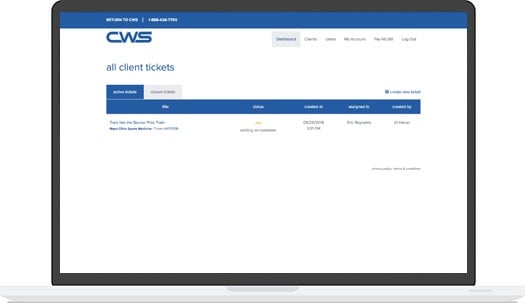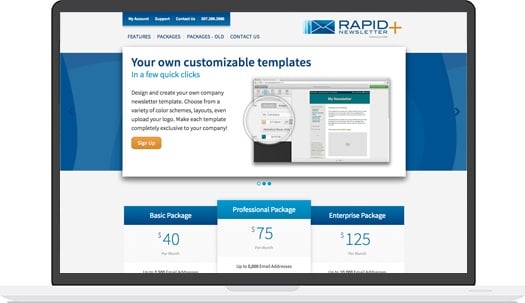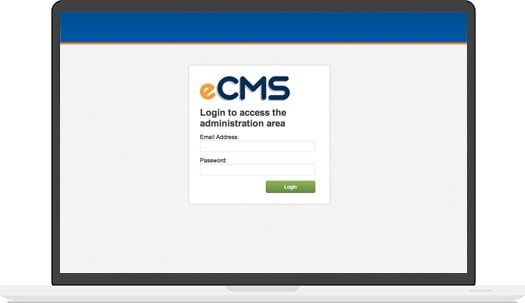One blog post can make you thousands of dollars.
When a prospect feels your blog is useful to his or her business, this can start a chain reaction that ends with that prospect becoming a customer.
Sign up for the Inbound Marketing Basics Email Course
If you’ve been following our Inbound Marketing Basics series, you should have completed your buyer personas and performed keyword research. The next step is to create content that attracts your ideal customers. Blog posts are ideal for this because your ideal customers appreciate articles filled with useful information that was written specifically for them. Google also loves blog posts for that same reason, which helps your website rank higher for your targeted keywords.
While it is important to write strategic content on all pages of your website, this article focuses on how to write a blog post.
The thought of writing not just one but several blog posts to attract customers may seem daunting. But with a plan and system, it can be easy.
Use an attention-grabbing title and introduction
Both the blog title and introduction need to grab the attention of reader so they will read the whole blog post. The best titles grab a reader’s attention because of how useful the topic is. Don’t use gimmicky or witty titles. They may make you chuckle, but they’ll fall flat with your readers.
Another way to grab the reader’s attention is with an audacious statement—just like I did at the beginning of this article.
You can also start with something more subtle but still effective:
- Why should this topic matter to the reader?
- What happens if the readers fails to perform the actions suggested in your blog post?
From there, write another sentence or two that segues into the main topics (like this one).
Have three main topics
 The “rule of three” is an informal writing principle that suggests that people more easily remember information that comes in threes. (Ever hear of The Three Little Pigs or The Three Musketeers?) For some reason, information that is presented in groups of three has a rhythm that appeals to our brains.
The “rule of three” is an informal writing principle that suggests that people more easily remember information that comes in threes. (Ever hear of The Three Little Pigs or The Three Musketeers?) For some reason, information that is presented in groups of three has a rhythm that appeals to our brains.
You don’t always need to present your main topics in groups of threes—and often you cannot—but it’s a good rule of thumb to follow when possible.
For each topic, try to share an anecdote, example, or research (notice the list of three) for each point. Storytelling is a powerful tool for engaging your reader. Sharing anecdotes, examples, and research is a form of that.
If possible, share a relevant image. However, don’t share images for the sake of including images. Images should help illustrate a point, such as graphs, tables, or infographics. If you don’t have a relevant image, don’t sweat it.
[Sign up here for our FREE Inbound Marketing Basics Course!]
Use a conclusion
Your conclusion should be short, sweet, and to the point. Summarize the main subject of your blog post and why it is important to your reader. Suggest a few action steps. I also like to end with a question because this drives the content deeper into the reader’s mind and tends to make them remember my blog post longer.
Conclusion
Blog posts should be an integral part of your inbound marketing strategy. Write them directly to your buyer personas, and contain keywords they might use to search for important information.
Here are three steps you can take to get started with blog posts:
- Write your buyer personas so you have a specific reader in mind
- Perform keyword research so you include search terms your reader uses
- Create a list of major topics that your ideal customer would find useful and in which you have expertise
Haven’t you waited long enough to start planning the most effective inbound marketing strategy available?

.jpg?t=1533315998368) How-To Articles
How-To Articles Support Portal
Support Portal Webmail
Webmail Rapid Newsletter+
Rapid Newsletter+ eCMS
eCMS

 Our content team is made up of thought leaders, strategists, and content creators who have more than 70 years of combined experience. With a wide variety of backgrounds as entrepreneurs, marketing gurus, healthcare associates, as well as plenty of experience in other industries, we help grow businesses with our relevant, trusted, and helpful resources.
Our content team is made up of thought leaders, strategists, and content creators who have more than 70 years of combined experience. With a wide variety of backgrounds as entrepreneurs, marketing gurus, healthcare associates, as well as plenty of experience in other industries, we help grow businesses with our relevant, trusted, and helpful resources.
